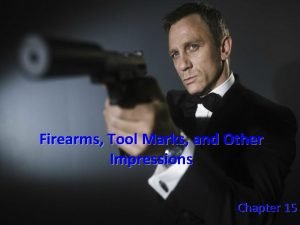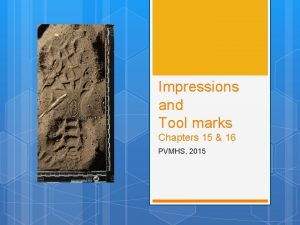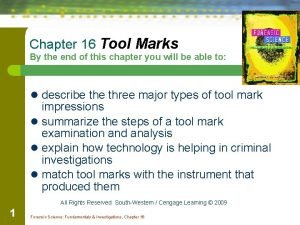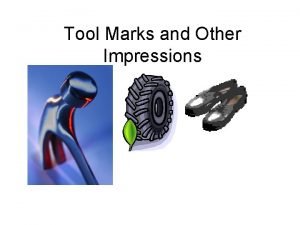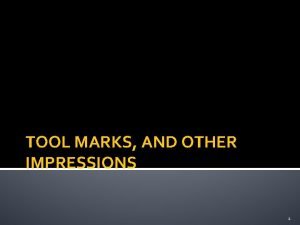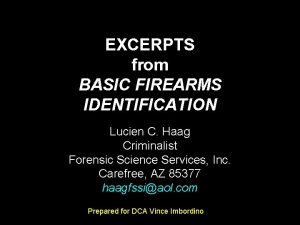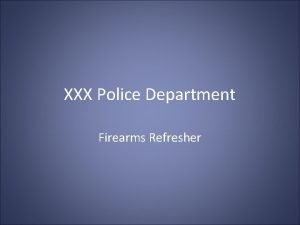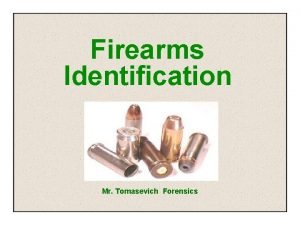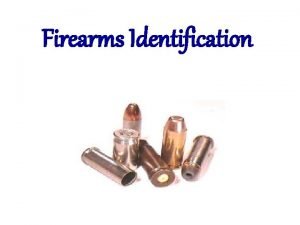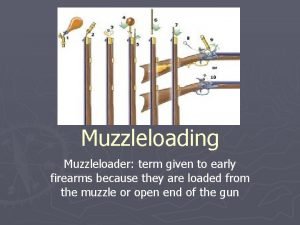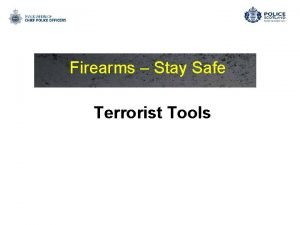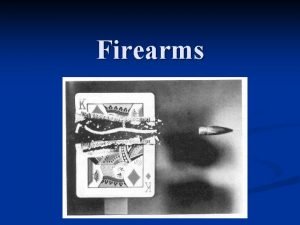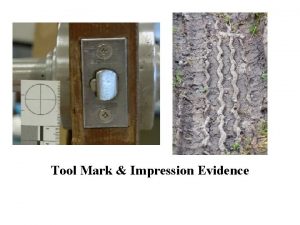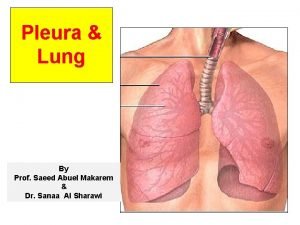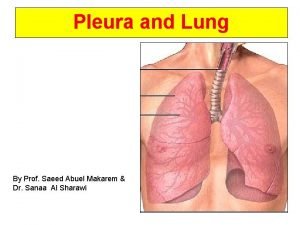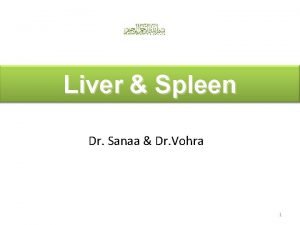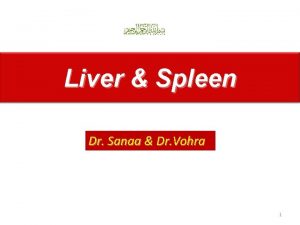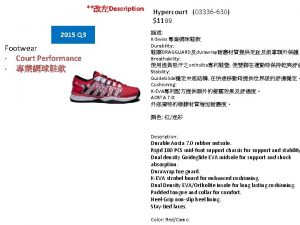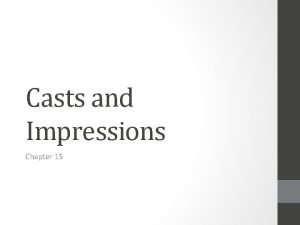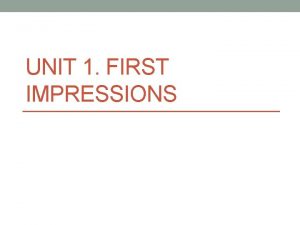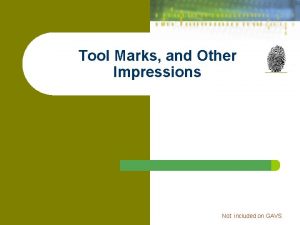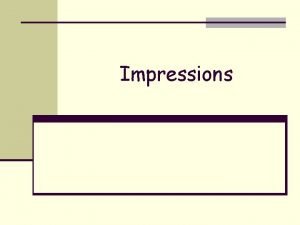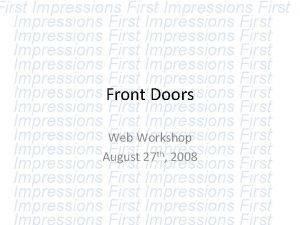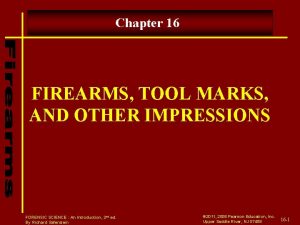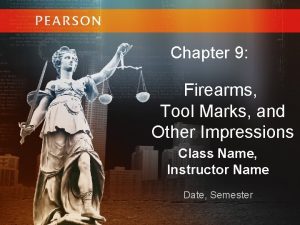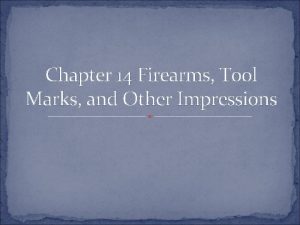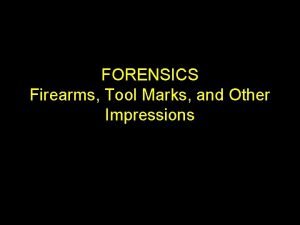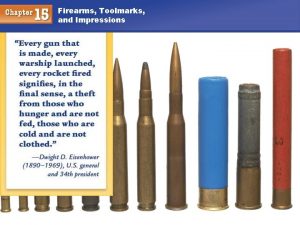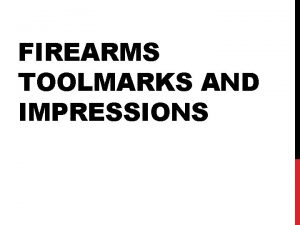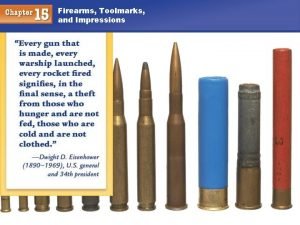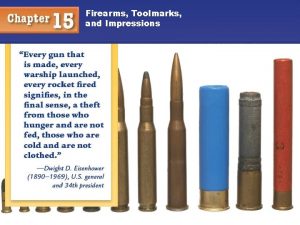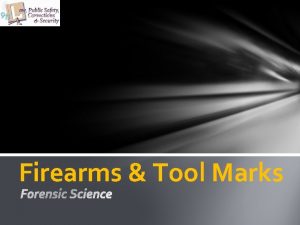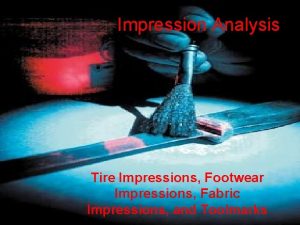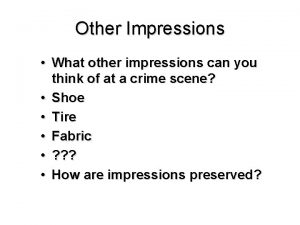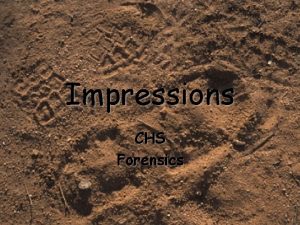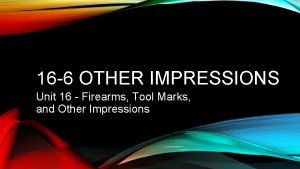Firearms Took Marks Other Impressions Chapter 15 Mr
























































- Slides: 56

Firearms, Took Marks & Other Impressions Chapter 15 Mr. Carl

Firearms: A Quick History • Almost every gun is based on the same simple concept: You apply explosive pressure behind a projectile to launch it down a barrel. • The earliest & simplest application of this idea is the cannon.

The 1 st handheld guns were essentially mini-cannons; you loaded some gunpowder & a steel ball & lit a fuse.

• War typically resulted in the need for improved weapons technology. • In the late 1800’s, the revolver quickly became popular due to it’s size & quick loading. – It only had to be reloaded every 5 -6 shots instead of after each shot.

• Handguns reigned supreme for the past 200 years & to this day, remain the most popular & readily available firearm.


Firearms Identification • Often confused with the term ballistics • Ballistics is the study of a projectile in motion. – Inside the firearm – After it leaves the firearm – When it impacts the target

Firearms Identification of Firearms is based upon this basic idea: A harder object marks a softer one & imparts/transfers its microscopic irregularities to that object.

Forensic Firearms Expert • Did a suspect use this gun to kill that person? • Did these bullets come from that gun? • Was it really self-defense? • Is this a case of suicide, or is foul play involved?

Forensic Firearms Expert • Bullet Comparison • Weapons Function – Is it safe? Has it been modified? • Serial Number Restoration • Gunpowder Residue Detection – on clothes, hands, & wounds • Muzzle-to-Target Distances

Pulling the Trigger • Pulling the trigger releases the firing pin… • The firing pin strikes the primer… • The primer ignites the gun powder… • The powder generates gas that propels the bullet forward through the barrel & ejects the spent cartridge case.





Caliber: the diameter of the gun barrel. • Caliber is recorded in – hundredths of an inch (. 22 &. 38) – millimeters (9 mm)

Bullet Anatomy

Anatomy of a Bullet

Bullet Comparisons • Each gun leaves distinct markings on a bullet passing through it. • A gun barrel is made from a solid bar of steel that has been drilled/hallowed out. • The drill leaves microscopic marks on the barrel’s inner surface.

Bullet Comparisons • Gun manufacturers also add spiral grooves to the barrel. This is known as rifling. • Lands: the space between the grooves. • As a spinning bullet passes through the barrel, it is marked by these grooves.

Class Characteristics • Class Characteristics: Once a manufacturer chooses a rifling process, for a particular class of weapon, they keep it consistent. • Lands & Grooves are the same for a model. –. 32 caliber Smith & Wesson has 5 lands & grooves twisting to the right. –. 32 caliber Colt has 6 lands & grooves twisting to the left. • Class characteristics can eliminate certain makes but are not enough to ID a particular gun.

Individual Characteristics • Imperfections in the manufacturing process make each barrel unique. • Rifled barrels, even if made in succession will NOT have identical striation (scratchlike marks).

Bullet Comparisons • To match bullets to a gun, test bullets must be fired through a suspect barrel for comparison. • Goddard & Comparison Microscopes – Examined bullets side-by-side (to match striated markings).

Bullet Comparisons

Cartridge Markings All moving components contact the cartridge rather than the bullet can leave useful impressions on shell cartridges – Breechface marks – Firing pin impressions – Chamber marks – Extractor & Ejector markings

Breechface Marks



Actual Breech Marks

Firing Pin Marks

Chamber Marks

Ejector Marks

Other Factors • Perfect matches sometimes difficult b/c: – Presence of grit & rust in a barrel – Recovered bullets too mutilated or distorted on impact • A spent bullet’s weight can sometimes determine the gun make. • Microgrooves: 8 -24 grooves; it’s not as common • General Rifling Characteristics File – FBI database of known land/groove width for all weapons.

Shotguns • Smooth barrel – Projectile NOT marked as it passes through • Fire small lead balls or pellets contained within a shell. • Characterized by: – diameter of the shot – size & shape of the wad – Gauge: diameter of the barrel • ( gauge diameter)

Gunshot Residue (GSR) • GSR Sources: – victim, clothing or target – shooter’s hands • Gunpowder Chemistry – Major detectable elements are: lead (Pb), barium (Ba) & antimony (Sb) – Virtually all cartridge cases are made of brass (copper & zinc); also detectable.

Griess Test • Tests for the presence of nitrates (partially burned or unburned gunpowder) • Swab of shooter’s hand • Must produce a pattern for a distance determination

Results of GSR Hand Test • Negative results may be caused by: – Washing the hands – Shooter may have been wearing gloves – Lead free ammunition • A rifle or shotgun may not deposit GSR on hands



GSR on the hand of a suicide victim, proving he was holding the weapon when it was fired.

With a contact or very close range gunshot wound, it is possible to have blood spatter as well as GSR on the hand of the person firing the weapon.

Trajectory



SERIAL NUMBER RESTORATION – When a serial number is stamped into a gun, the metal underneath the number is compressed & hardened. – If the number is filed-off, the hardened area may still be present. – By using an acid solution the metal can be slowly eaten away. • In this process the softer metal will be eaten away first and the number may reappear.

Before & After – Historically, serial numbers are successfully restored 63% of the time on steel & 54% of the time for aluminum or zinc.

FIREARMS EVIDENCE COLLECTION n n n Make sure it is unloaded!!!!! DO NOT put a pencil into a barrel REVOLVERS n n AUTOMATICS n n n Indicate location of fired & unfired ammunition Check magazine for number of rounds Fingerprint magazine Place ID tag on trigger guard

FIREARMS EVIDENCE COLLECTION n AMMUNITION n Write on base or nose n Package in pill box or envelope n Wrap in tissue to protect

FIREARMS EVIDENCE COLLECTION n CLOTHING Protect & preserve any residue n Air dry if wet n Package separately in paper bags n n Establish CHAIN OF CUSTODY

TOOL MARK IMPRESSIONS • Impressions • Cuts • Gouges • Abrasions

TOOL MARK IMPRESSIONS • SUBMIT ENTIRE OBJECT • PACKAGE SEPARATELY (ALWAYS!) • DO NOT ATTEMPT TO FIT THE TOOL INTO THE TOOL MARK





 Rimfire vs centerfire
Rimfire vs centerfire Chapter 15 firearms toolmarks and impressions
Chapter 15 firearms toolmarks and impressions Tire tread impressions are always plastic impressions.
Tire tread impressions are always plastic impressions. Abrasion marks are made by objects, which include:
Abrasion marks are made by objects, which include: First impressions four marks
First impressions four marks Shoe and tire marks impressed
Shoe and tire marks impressed When to use a exclamation mark
When to use a exclamation mark Mptc firearms instructor manual
Mptc firearms instructor manual Firearms
Firearms Virginia firearms transaction record sp-65
Virginia firearms transaction record sp-65 Firearms
Firearms Rifling definition forensics
Rifling definition forensics Bullet anatomy
Bullet anatomy Firearms
Firearms Firearms
Firearms Firearms
Firearms Firearms
Firearms Firearms
Firearms Cdc firearms
Cdc firearms Other initiated other repair
Other initiated other repair First impressions vocabulary
First impressions vocabulary Patent impression
Patent impression Dominant impression example
Dominant impression example Ma vision du métier observé
Ma vision du métier observé Aortic impression lung
Aortic impression lung Root of the lung vs hilum
Root of the lung vs hilum Esophageal constrictions mnemonic
Esophageal constrictions mnemonic Liver impressions
Liver impressions Diaphragmatic surface of the liver
Diaphragmatic surface of the liver Class characteristics of footwear impressions
Class characteristics of footwear impressions Dental impressions course
Dental impressions course Which creates shadows for photographing impression evidence
Which creates shadows for photographing impression evidence Mes impressions sur le stage exemple
Mes impressions sur le stage exemple Once done never forgotten
Once done never forgotten Quinary economic activity examples
Quinary economic activity examples First impression paragraph
First impression paragraph Truemaps
Truemaps Turning diameter definition forensics
Turning diameter definition forensics How to write a dialogue
How to write a dialogue Patent print forensics definition
Patent print forensics definition Are impressions left by friction ridge skin on a surface
Are impressions left by friction ridge skin on a surface Success dress to win
Success dress to win Grendel setting
Grendel setting What are your first impressions of beowulf
What are your first impressions of beowulf Examples of dominant impressions
Examples of dominant impressions First impressions count reading answers
First impressions count reading answers Reading impressions
Reading impressions First impressions finger print
First impressions finger print The landlady setting
The landlady setting Evidence of evolution of remnants and impressions *
Evidence of evolution of remnants and impressions * Convert impressions to grps
Convert impressions to grps What is a patent impression
What is a patent impression Impressions of feelings
Impressions of feelings First impressions
First impressions Academic impressions
Academic impressions Partial varia breast shapers
Partial varia breast shapers Looking out looking in
Looking out looking in
